
Another shocker, as the extremely fascinating multi-instrumentalist and trailblazer David Lindley passed away at age 78 today.
I must leave it for others to discuss his life and long career; I can only offer here my brief observations on his relationship with the harp guitar.
His L.A. Times obituary is here, and for fans and historians of his early work, I highly recommend the incredible web site of Rock Historian Bruno Ceriotti, who has a wonderfully thorough page on Lindley’s group Kaleidoscope.
Sadly, though I saw him perform on occasion at McCabe’s and around town, I never met the man. Through various mutual friends in Southern California, I extended an invite to my own Museum and tried to finagle a visit to his place in Claremont, but it wasn’t to be. In any event, I got that sense that all those old and weird instruments were for him really just tools for making music.
But what instruments! Lindley and his Kaleidoscope pals were famously some of the very first folk musicians to discover abandoned early 1900s plucked stringed treasures in Southern California pawn shops and the first “folk music” stores. I don’t even want to know how little they paid for all those fantastic Gibson instruments!
As far as I have been able to determine, David Lindley was the first musician (with partner Chris Darrow) in “modern times” to discover the forgotten American harp guitar. Yes, two decades before Hedges and the rest of us – even a decade before the famous Robbie Robertson Last Waltz scene – he was hip to it. And using it.
Their very first 1967 album Side Trips included a harp guitar on the cover…but not Lindley’s Gibson…a Dyer!
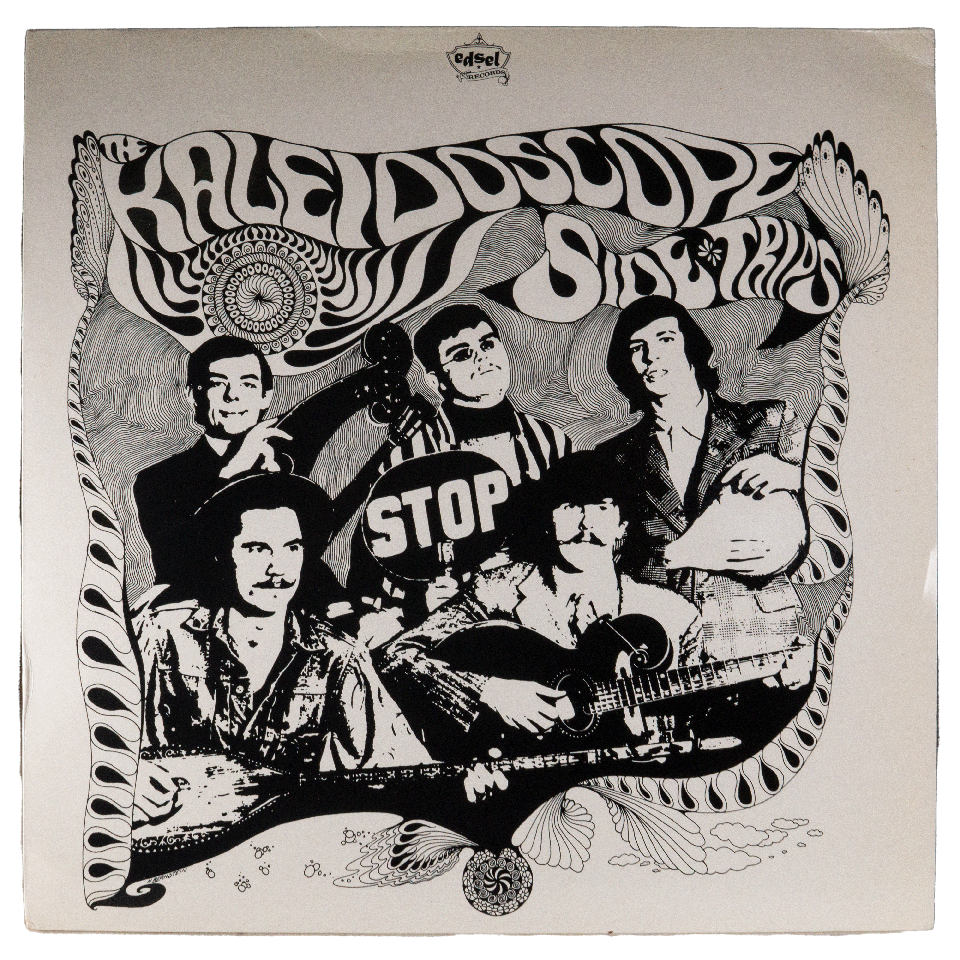 OK, we’ve got to get a better look at that!
OK, we’ve got to get a better look at that!
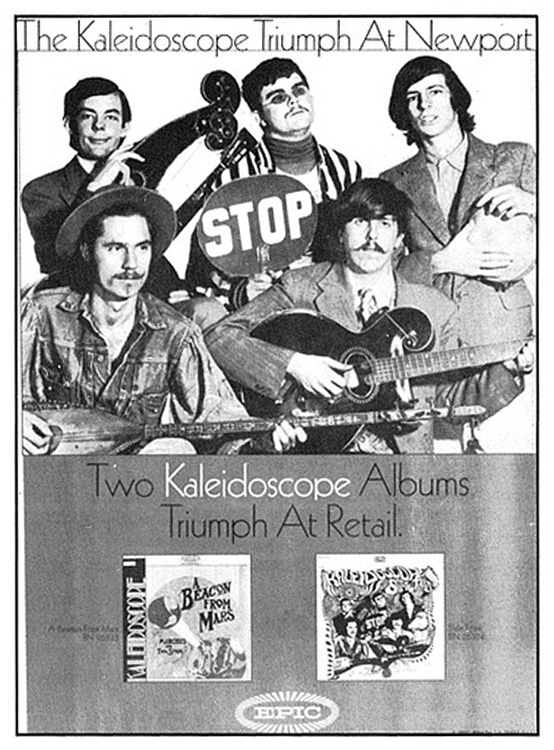
This later advertisement has more detail. A very clean-cut Lindley is holding a black Dyer? Note also his original folk partner Chris Darrow’s Gibson “Florentine” Style O! Lindley was also introduced to his beloved saz and oud by original group member Solomon Feldthouse. All the members were versatile multi-instrumentalists.

In another 1967 photo session, Darrow (who may have actually owned it) holds the Dyer. OK, you have got to be kidding me! One last image from a later montage shows it best:
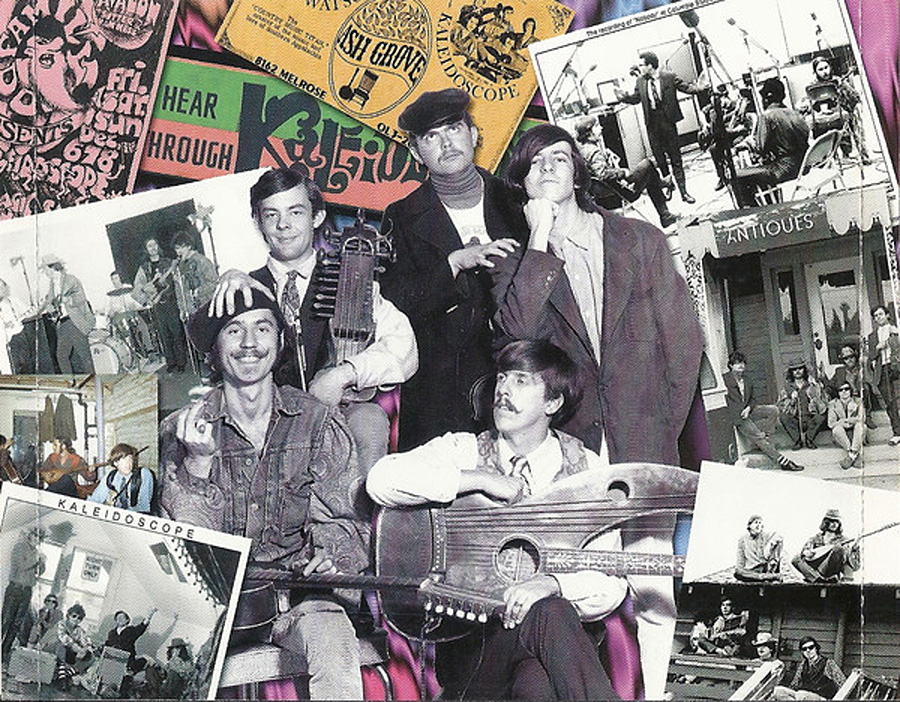
It’s the dark brown-top Valentino Dyer Style 8! So that’s where it came from (or went). I tell the story of this wonderful instrument on two of my blogs, and only later found that it was once a Kaleidoscope instrument. As Mandolin Brothers had a photo of it, I wonder if that’s where Darrow got it? Or sold it? This important instrument still remains at large.
Lindley is listed as playing harp guitar on the first album – but was it the Dyer or the Gibson which he also acquired in 1967?
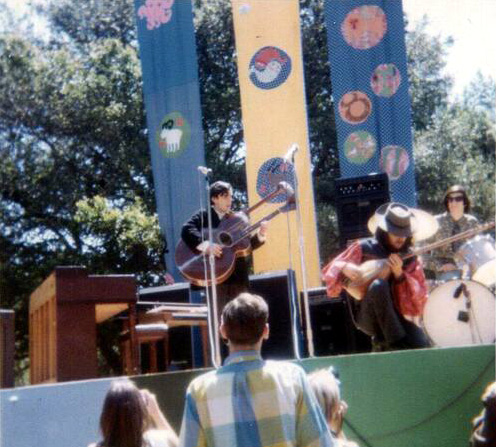
It first appears at a live show in 1967. Its color seems curious…

A retrospective CD includes this photo, with Lindley holding the Gibson.
![]()
It next appeared in 1968 on the back cover of their second album A Beacon From Mars, and the flyer below.

After the ‘Sixties, Lindley’s original Gibson HG seems to have been left behind. Some years ago, I finally stumbled upon a decent photo of it. Curious indeed!
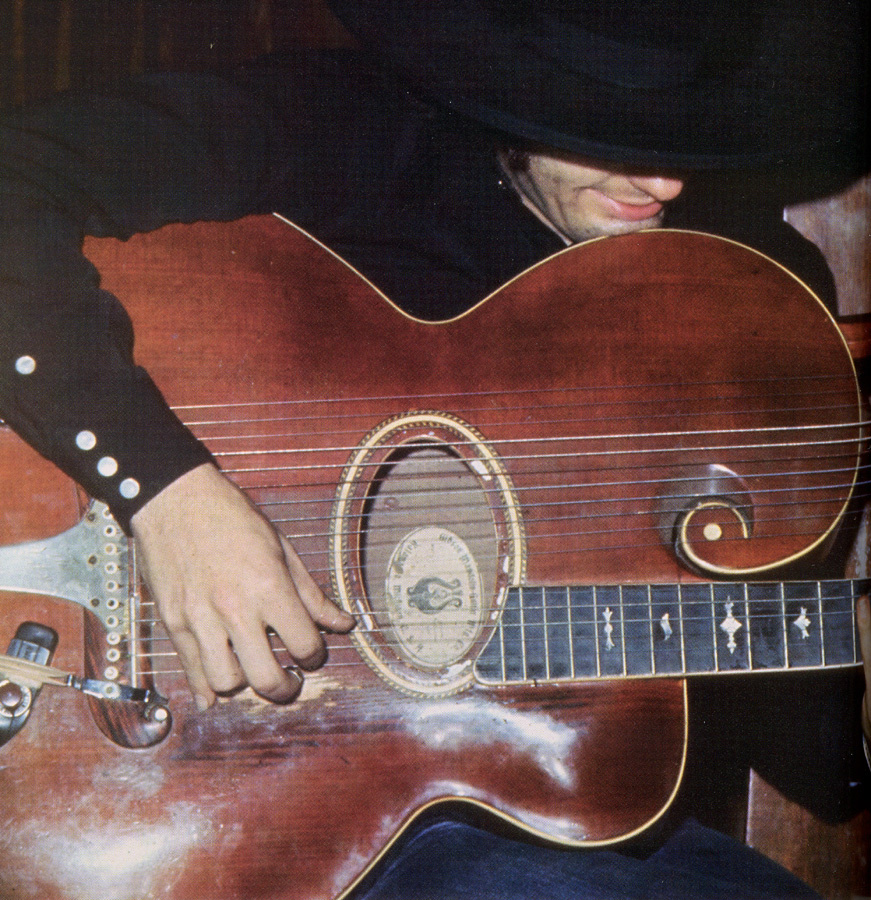
It’s an early 1905-1907 model with an unusual red not-quite-sunburst top. This was not a factory color that I’ve ever heard of. Was it a re-fin? It shows eleven sub-basses, which was a rare option in the early days. We can see neither bridge pins nor tuners in any of his photos, but I’m guessing that it was not modified but an original 17-string instrument. It’s hard to tell his gauges, but he himself described his tuning as “chordal.” It’s why I never had him listed on this site as a true “harp guitar player,” as I never knew what he did with it! Or if he played those harp strings. I suspect he did. He played Autoharp in his early banjo duo with Darrow, so knew all about the magic sound of “fretless zithers.” So, even though he knew they were sub-bass strings from Darrow’s authentically-strung Dyer 6-bass harp guitar, he must have envisioned that he could do something more “psychedelic” with his eleven harp strings, and so strung it like a wonderful low-pitched Autoharp with a couple of chords. I imagine one might be hard-pressed to pick those strums out of the album’s tunes, but please let me know if you can!
Another reason for creating harp chords, was that, like many musicians then (and still today) Lindley fell under the misassumption that the bass strings were nothing but low “drones.”
His quote (year unknown), when asked about his harp guitar:
“Yes, it is” says Lindley. They don’t (…) any more, but Gibson used to manufacture them; they had the idea of becoming America’s answer to Stradivarius……. They tried to develop instruments which would fit into an orchestra, but could be plucked – so they made banjos, mandolins, mandolin cellos, mandolin basses…… all sorts of weird things. The harp guitar had bass strings which were used for drones – but nobody I knew really knew how to play one. I figured out my own way, by tuning the bass strings chordally. It was a vestige of a long gone era – they must have gone out of production in the twenties, but you sometimes saw one…… they’re still around, but very hard to find”.
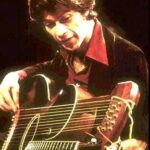 I always wondered if Robbie Robertson (another beloved-rock-star-but-not-really-an-actual-harp-guitarist) got his Gibson harp guitar tuning idea from David Lindley, as a decade later at the close of The Last Waltz, we see him play his own harp strings just once at the top of the tune – with a single Autoharp strum!
I always wondered if Robbie Robertson (another beloved-rock-star-but-not-really-an-actual-harp-guitarist) got his Gibson harp guitar tuning idea from David Lindley, as a decade later at the close of The Last Waltz, we see him play his own harp strings just once at the top of the tune – with a single Autoharp strum!
(Did Robertson – below – acquire Lindley’s own Gibson? No – it is a similar c.1907 scroll bridge model, but a black top with the then-standard ten sub-basses.)
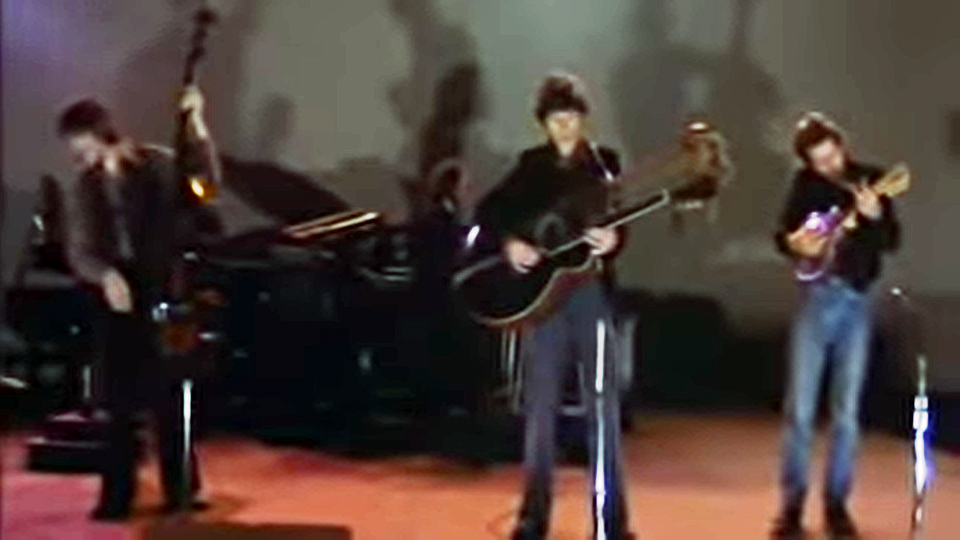
Hey, I used to string and tune some of my own weird instrument finds however I wanted myself (and still sometimes do). I just know I woulda loved Kaleidoscope had I discovered them at the time. Time to hit up eBay…? I don’t know, but it’s certainly time to get out our Jackson Browne and Ry Cooder albums and celebrate the Weissenborn King!
Friends and fans – if you know of any Lindley harp guitar stories or details, please comment!

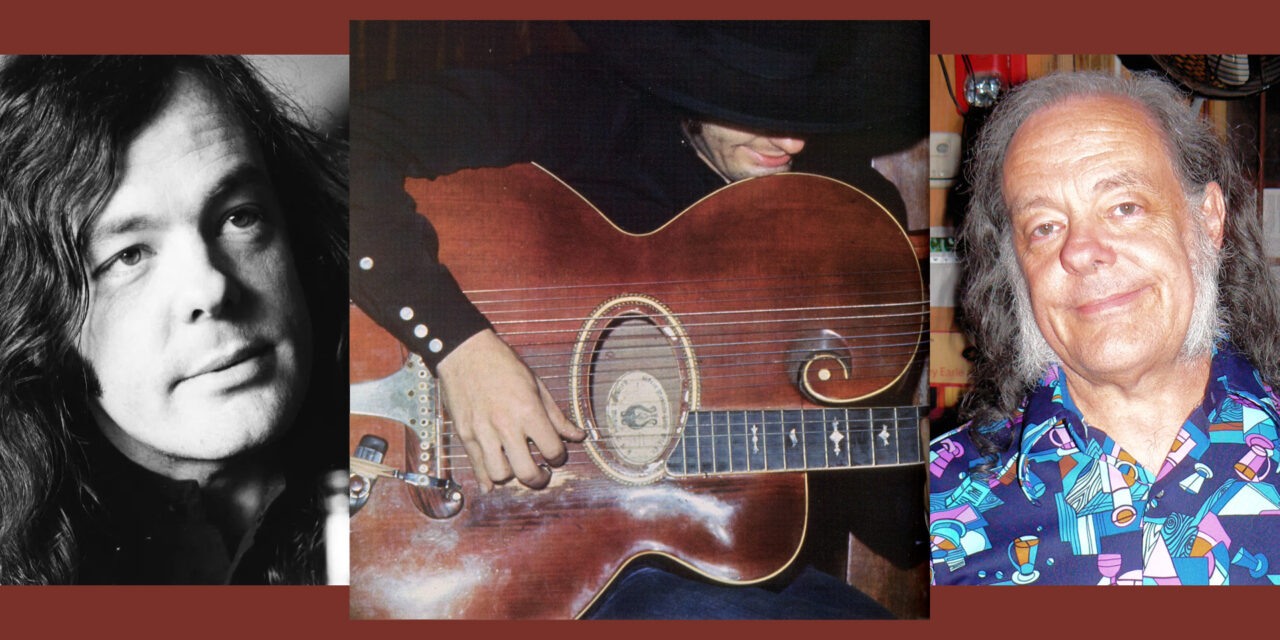
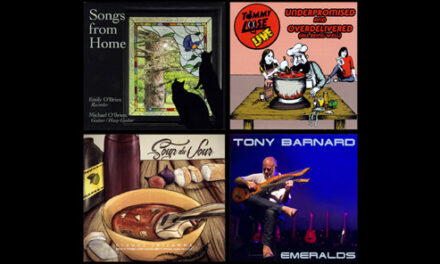
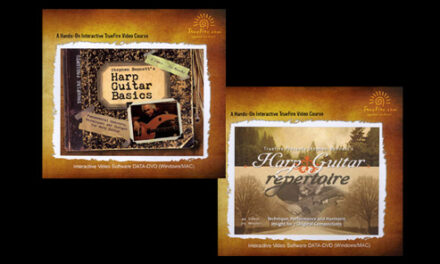
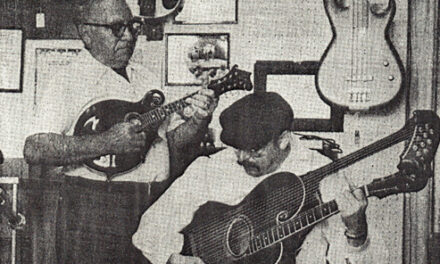
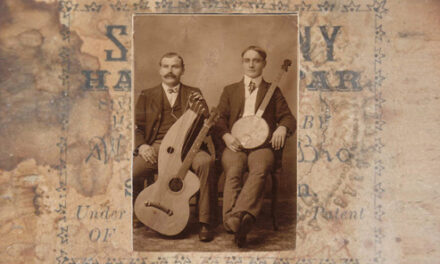
I thought David Lindley was next to immortal. He was on almost every record that I ever considered the proverbial soundtrack of my life. When we heard him play not far from here not so many years ago, he was so full of life and almost forgot to play to fit in all the jokes and stories he wanted to tell. An absolute hoot.
Anyway. He did say an interview with Frets magazine a million years ago, that while he did collect he was a musician first. That is pretty much in line with your assessment that he considered the harp guitar a tool and not an antique.
Jeff Beck, Wayne Shorter and Lindley at the same time. God must be hard of hearing.
I agree – the plaid outfits alone!
And Crosby…hate to think who’s next…